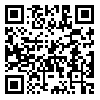Volume 19, Issue 124 (2022)
FSCT 2022, 19(124): 101-111 |
Back to browse issues page
1- Msc student of Food Science and Technology, Lahijan Branch, Islamic Azad University, Lahijan, Iran , leili_fd97@yahoo.com
2- Assiciate Professor, Department of Food Science and Technology, Lahijan Branch, Islamic Azad University, Lahijan, Iran
2- Assiciate Professor, Department of Food Science and Technology, Lahijan Branch, Islamic Azad University, Lahijan, Iran
Abstract: (1088 Views)
Rice bran can be a suitable compound for bread enrichment due to its considerable amounts of fiber and protein. However, the addition of rice bran due to impaired textural and sensory properties as well as the presence of phytic acid in it should be further investigated. On the other hand, when bread bakes at temperatures above 120 °C through millard reaction, a carcinogenic compound called acrylamide is produced which can be minimized by removing the effective factors in its production. In this study, ordinary rice bran and hydrothermaled rice bran were used in different percentages of 3, 6 and 9% to enrich wheat flour and molded bread. Then, color changes, acrylamide levels and textural properties were measured. The results showed that with increasing the use of bran in bread, the amount of discoloration and acrylamide concentration increased and the samples containing hydrothermal bran had higher acrylamide levels. Hardness, adhesiveness, gumminess and chewiness had an increasing trend with increasing bran percentage, while cohesiveness and springiness showed a decreasing trend with increasing bran percentage. According to the results obtained based on the ADI of acrylamide and due to the reduction of phytic acid in bread samples, treatment containing 3% hydrothermal bran not only had the lowest acrylamide content and at the same time had the lowest amount of phytic acid, but also had acceptable tissue and appearance characteristics.
Article Type: Original Research |
Subject:
Cereal and products technology
Received: 2021/12/24 | Accepted: 2022/04/10 | Published: 2022/05/31
Received: 2021/12/24 | Accepted: 2022/04/10 | Published: 2022/05/31
| Rights and permissions | |
 |
This work is licensed under a Creative Commons Attribution-NonCommercial 4.0 International License. |



